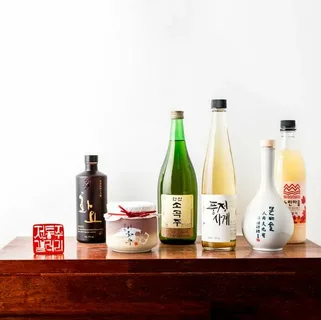Introduction to Soju
Soju is a traditional Korean distilled alcoholic beverage enjoyed for centuries. It is one of the most popular alcoholic drinks in South Korea and is gaining international recognition for its smooth taste, affordability, and versatility.
Soju is often compared to vodka but is milder in alcohol content and has a slightly sweet and neutral flavour.
It is a staple in Korean drinking culture and is commonly consumed with various foods, especially Korean BBQ and spicy dishes.
History of Soju
The origins of soju trace back to the 13th century during the Mongol invasions of Korea. The Mongols brought distillation techniques from the Middle East, which Koreans adopted and modified.
Initially, soju was made using rice, but when rice shortages occurred in the late 20th century, manufacturers began using alternative starches like sweet potatoes, barley, and wheat.
Modern soju is often made with a mix of starches and contains added sweeteners to enhance its smoothness.
How Soju is Made
Soju is made through a distillation or dilution process:
- Distilled Soju: Traditional soju is made by fermenting grains such as rice, wheat, or barley and then distilling the liquid to produce a higher alcohol content. This method results in premium soju with a richer, more complex flavour.
- Diluted Soju: Modern, mass-produced soju is often made by diluting ethanol with water and adding sweeteners. This process results in a lighter, smoother drink with a lower alcohol percentage, making it more accessible and easier to drink.
Alcohol Content and Variants
Soju typically has an alcohol content ranging from 12% to 25%, though traditional distilled soju can be more potent. The lower-alcohol versions are particularly popular among younger drinkers and those who prefer a milder drinking experience.
There are also flavoured soju variants, including fruit-infused options like peach, grapefruit, apple, and strawberry. These flavoured soju have lower alcohol content (around 12–14%) and are especially popular among casual drinkers and those new to soju.
Popular Soju Brands

Several major brands dominate the soju market, each with a unique taste and style. Some of the most well-known brands include:
- Jinro is the world’s best-selling soju brand, mainly known for its green bottle and varieties like Chamisul.
- Chum Churum: A smooth-tasting soju brand often associated with its “Like the First Time” slogan.
- Good Day: Known for its lighter and slightly sweeter taste.
- Andong Soju: A traditional distilled soju with a higher alcohol percentage, often considered a premium option.
How to Drink Soju
Soju is traditionally consumed with friends, family, or colleagues in a group setting. There are a few cultural drinking customs and etiquette rules:
- Pouring & Receiving: It is customary to pour soju for others rather than serving yourself when drinking with others. Holding the glass with both hands shows respect when receiving it.
- Drinking Etiquette: Younger individuals often turn their heads slightly away from elders when taking a sip.
- Shot Glasses: Soju is typically served in small shot glasses and consumed in one or two sips, though some prefer to sip it slowly.
Popular Soju Cocktails & Pairings
Soju is versatile and can be enjoyed in various ways beyond just drinking it straight. Some popular ways to mix and enjoy soju include:
- Somaek combines soju and beer (maekju), creating a refreshing and bubbly drink.
- Yakult Soju: A mix of soju, Yakult (a probiotic yoghurt drink), and Sprite for a sweet and creamy cocktail.
- Fruit Soju Cocktails: Mixed with fresh fruit juices like watermelon, pineapple, or mango.
Soju pairs exceptionally well with Korean dishes like:
- Samgyeopsal (Grilled Pork Belly): The fatty, smoky flavours of pork belly complement the smoothness of soju.
- Kimchi Jjigae (Spicy Kimchi Stew): The intense and spicy flavours balance well with the mild taste of soju.
- Fried Chicken: Soju’s crisp taste helps cut through the greasiness of fried foods.
Global Popularity of Soju
While soju has long been Korea’s favourite alcoholic drink, it has recently gained international popularity. Korean pop culture, including K-dramas and K-pop, has significantly introduced soju to global audiences.
Many Korean restaurants and bars worldwide now offer soju, and its affordability makes it an attractive alternative to other spirits.
Conclusion
Soju is more than just a drink—it is an integral part of Korean culture, social life, and cuisine. Whether you enjoy it in a traditional setting, mixed in cocktails, or with delicious Korean food, soju offers a unique and enjoyable drinking experience.
Its versatility, smooth taste, and rich history make it a beloved beverage that continues to gain fans worldwide.
Latest Posts!






